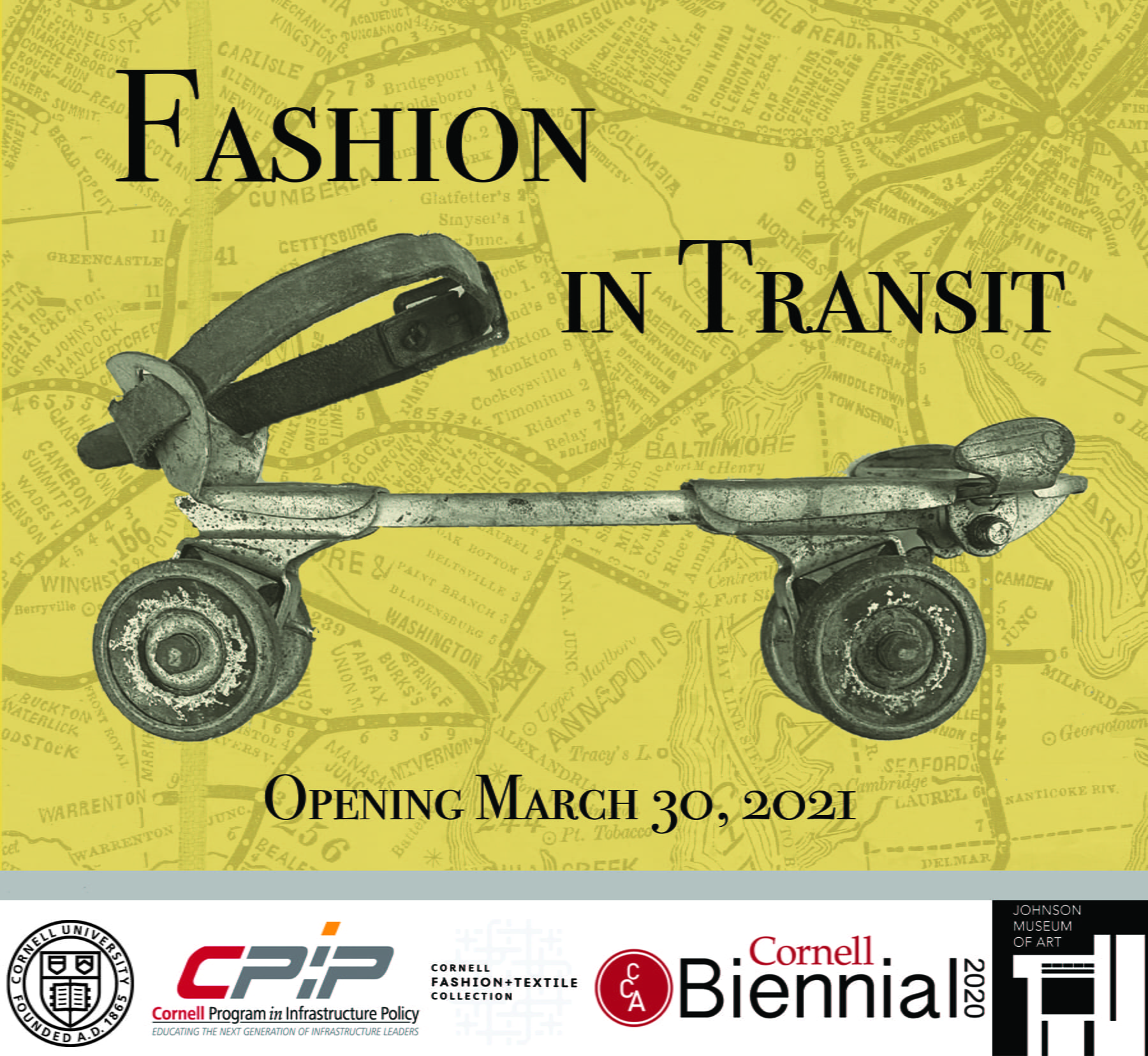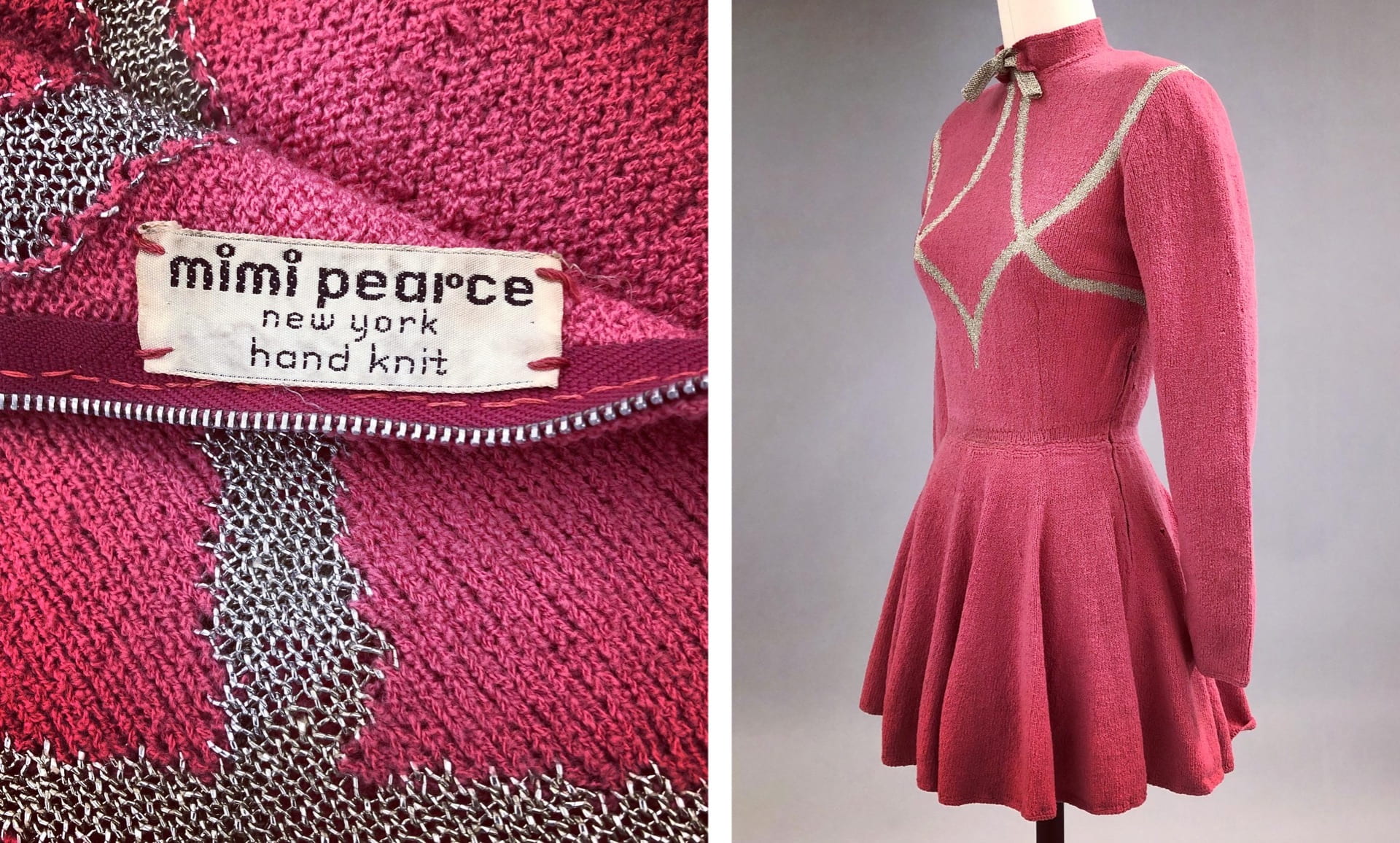FOR IMMEDIATE RELEASE
March 28, 2021
Exhibition, Fashion in Transit, explores how clothing, textiles, and accessories affect body movements, transportation infrastructure, and fashion trends.

A women’s engine-cleaning crew employed at Southern Pacific’s roundhouse in Oakland, California during WWII. Photo courtesy of the Kheel Center for Labor-Management Documentation and Archives, Cornell University Library (collection # 5376p, Box 01, Folder 23b)
Contact: cornellfashion@cornell.edu
Curators: Joshua Johnson B.A. ‘21; Mona Maher Ph.D. ‘24; Christine McDonald M.F.A. ‘22; and Kat Roberts Ph.D. ‘23
Advisors: Denise N. Green ’07; Rick Geddes; & Leah Sweet
Locations and Dates: Human Ecology Building, Level T Display Cases (March 30 – May 2); Herbert F. Johnson Museum of Art (March 30 – April 9); and online
Ithaca, N.Y. – Fashion in Transit opens in the Cornell Fashion + Textile Collection, the Herbert F. Johnson Museum of Art, and on the Cornell University Library’s digital exhibitions platform on March 30, and is a collaboration with the Cornell Program in Infrastructure Policy. The exhibition is funded by the Cornell Council for the Arts as part of the 2020-2021 Biennial theme “SWARM,” which faculty advisor and CF+TC director Denise N. Green ’07 says, “inspired us to consider fashion’s role in the collective movement of bodies around, across, above and through space.” While the physical exhibits are only open to Cornell faculty, students, and staff approved to visit campus (and an appointment is required for the Johnson Museum), we are pleased to invite the public to visit our digital exhibit and attend a special eCornell keynote webinar on April 8 at 1 PM.
From the aesthetics of transportation mechanisms themselves to the clothing and accessories worn by bodies in motion, fashion affects and is affected by the transit swarm. At a fundamental level, clothing functions as a form of transportation: shoes for walking, wingsuits for flying, skis for sliding, and soft robotic exoskeletons that facilitate arm and hand movements, among many other possibilities found throughout Fashion in Transit. Modes of transportation have also impacted dress and brought about new fashions, like dusters for early car travel, aviator jackets and sunglasses, uniforms for transit workers, and activewear for running, snowboarding, swimming, hiking, among other activities. The manufacture of clothing, shoes, and accessories also relies upon transportation infrastructure, which shapes distribution networks and transnational material flows within complex global apparel supply chains. “Over decades and even centuries, the technology of transportation has been a key driver of fashion. Indeed, the two are inextricably linked,” says Rick Geddes, Founding Director of the Cornell Program in Infrastructure Policy. “Increasing use of bicycles combined with the spread of urban transit systems made women’s hooped skirts impractical. The enlargement of America’s aviation network created demand for formal yet versatile flight attendant uniforms as well as an entirely new look for the ‘jet set.’ The sleek new materials of the space age changed fashion forever. Although more examples abound, the Fashion in Transit exhibit brings these interlinkages to the forefront of the viewers mind in a way not before conceived.”

An embellished ADIDAS sneaker from the early 2000s. The shoe was decorated by the wearer, who also replaced the original laces with rainbow-colored ones.
Fashion in Transit challenges visitors to question what it means–visually, aesthetically, artistically–to be a body in motion across time and space. The fashion exhibit in the Human Ecology Building considers the ways in which fashion has enabled different kinds of bodily movement across time. The cases are organized according to the type of movement that the garment or accessory enables or facilitates: sliding, swimming, walking, riding, rolling, flying and carrying. Curator Kat Roberts ’23 explains “We were drawn to the idea of using verbs as a means of organizing the exhibition, however, as our selections came into sharper focus, we were pleasantly surprised to discover various linkages among the sections. This interconnectedness is well expressed in swimming and sliding which are undeniably linked through the medium of water in different states.”
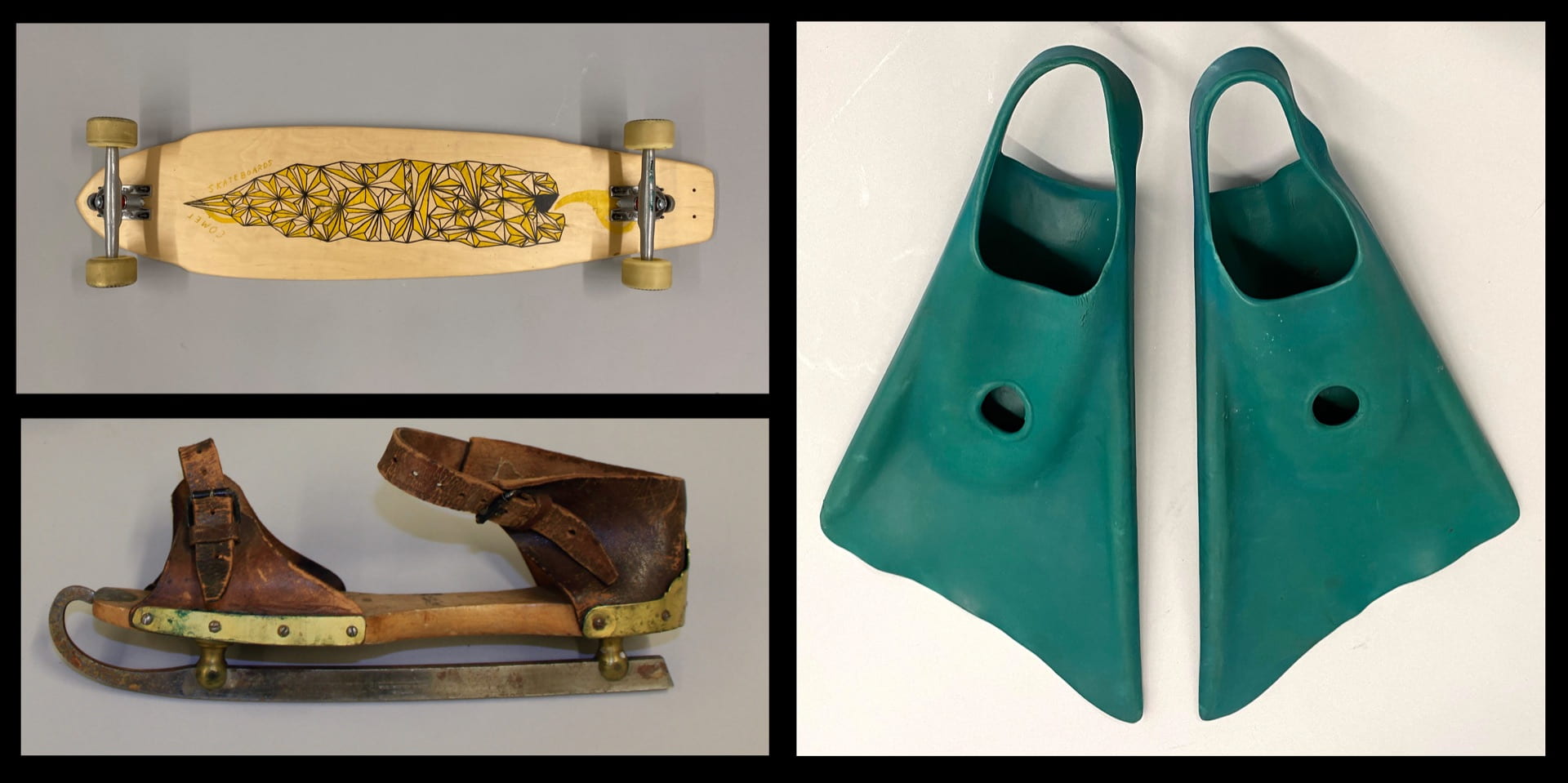
A Comet skateboard circa 2008, an early 20th century ice skate, and Churchill swim fins from the 1940s appear in the “Rolling,” “Sliding,” and “Swimming” sections of the exhibit.
The section of the exhibit dedicated to rolling includes a contemporary lime green spandex roller skating jumpsuit designed by Chesley Taylor for Taylor Fit Wear (watch the jumpsuit in action!), in addition to adjustable over shoe quad roller skates from the 1950s, a biodegradable Comet skateboard, and a late 19th century wooden wheelchair with lace caning on loan from the Yates County History Center. “This section of the exhibit forced us to reconsider the boundaries of fashion,” says Green ’07. “We wanted to challenge people to think about wheelchairs and other mobility devices as sites of fashion expression, just like skates, shoes, and other accessories that attach to the moving body.”
The case devoted to walking brings a contemporary Spartan Ultra Race ensemble into conversation with a walking dress and shoes from 1874, a man’s walking stick, a shoe-leveler, and a mechanotherapy device to enhance mobility of the lower leg created by a team of researchers at Harvard, including soft robotics designer and Cornell alumna Vanessa Sanchez ’15. These various accessories and outfits enable bipedality–that is, controlled lifting and forward movement of legs and feet, through their connection to hips, pelvis, spine, neck, and shoulders. Feet carry the walking body, which makes footwear critical. “Although shoes are essential for everyday travel,” says curator and “sneakerhead” Joshua Johnson ‘21, “they also serve as a means of expression.” Johnson curated a display of six sneakers and his own track shoes to convey different footwear stories. “From a vintage pair of Jordans to DIY designs on Adidas shoes, and everything in between. Shoes are outer shells that protect our feet, but they also inspire us to push forward toward our aspirations,” says Johnson ’21.

Shoes enable walking and are also place for expression, like this Converse sneaker which features pen and ink embellishments, a Bob Marley photo, and glitter nail polish. They were worn and decorated by Laura McIntyre Aguilar ’08 for about a decade, 1996-2006.
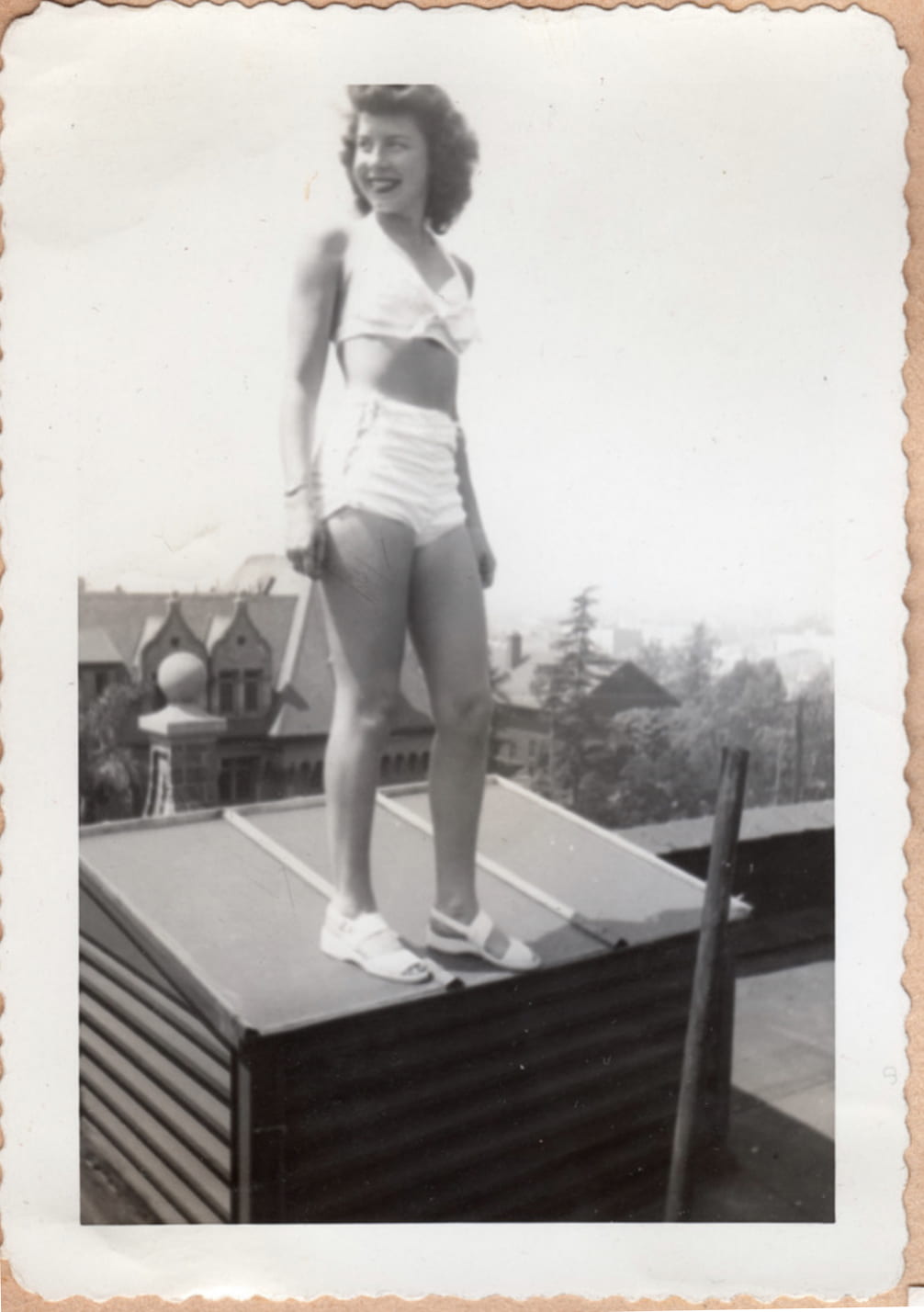
Billiejean Heneghan in a two-piece bathing suit in August 1945. She worked in a B52 airplane factory in Los Angeles during WWII.
Other garments and accessories in the exhibit that facilitate bodily movement include a skydiving wingsuit, ice skates, skis, and a sled. The section of the exhibit dedicated to swimming offers at least one example of a garment that challenges, rather than facilitates, bodily movement: a wool bathing costume from the 1920s that includes boomers and a long tunic. Alongside this historical swimsuit are three others: an early example of a two-piece, worn in August 1945 as WWII was coming to an end, a young boy’s swimsuit from the 1950s, and a contemporary gender-inclusive unisuit in rainbow LGBTQIA+ Pride print by TomBoyX — all featured against the backdrop of photographer O. Winston Link’s 1956 print, Hawksbill Creek Swimming Hole, Luray, Virginia, a stunning moment of transit collusion with swimmers splashing beneath bridges, with a Norfolk and Western train crossing above with its steam cloud contrasted against a dark night sky.
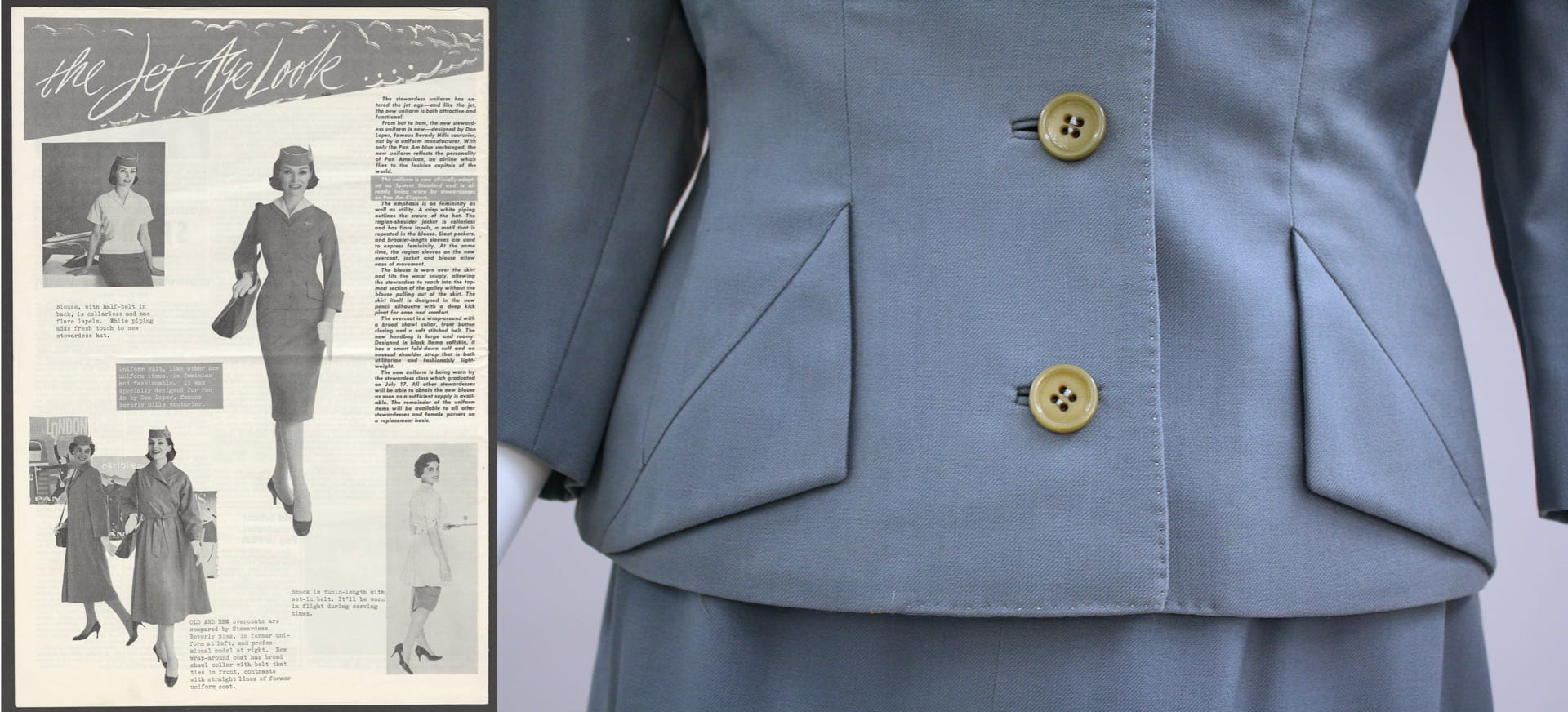
“The Jet Age Look” was designed by Don Loper for the air hostesses of Pan American World Airways in 1959.
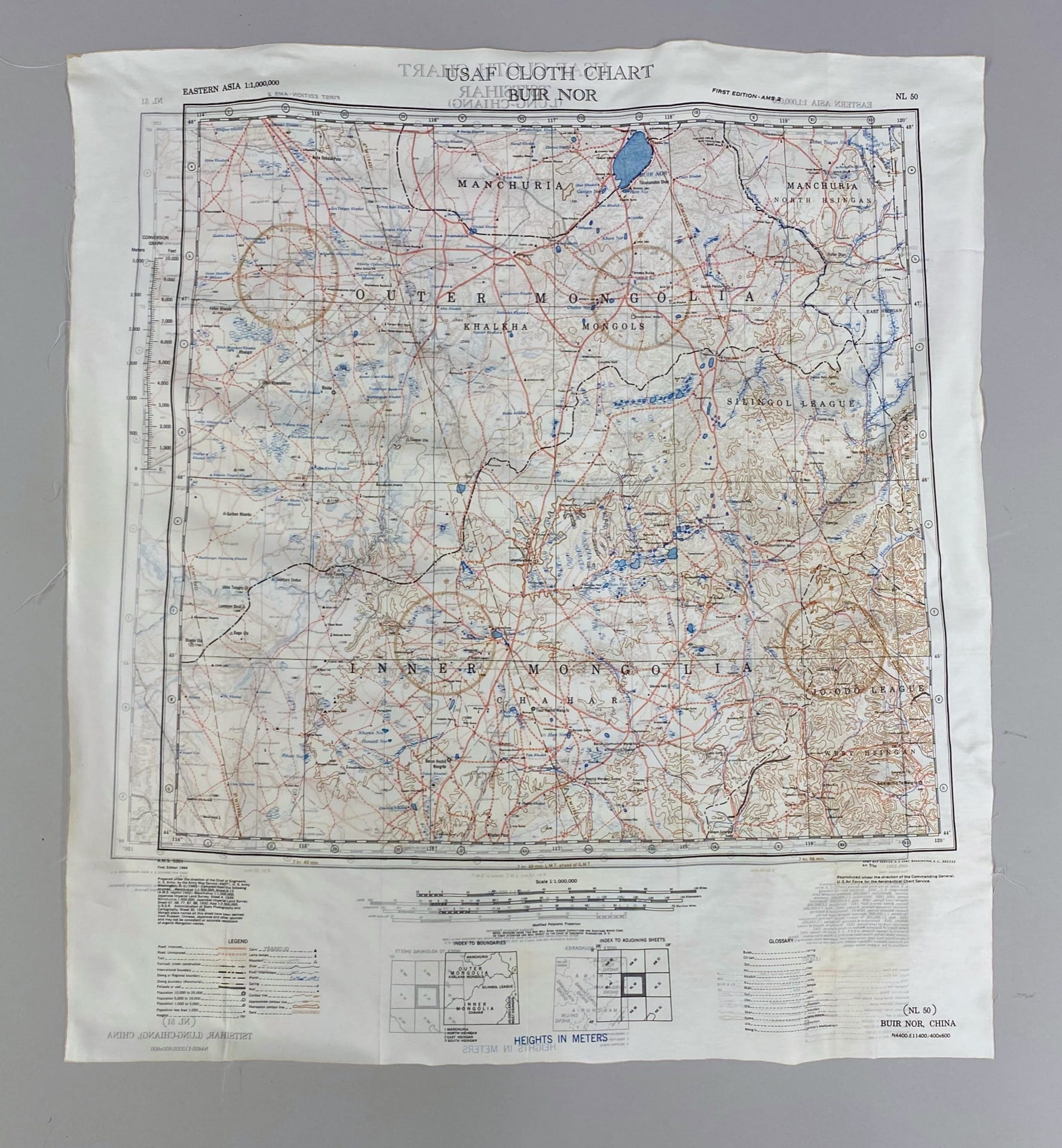
A 1944 evasion chart printed on both sides of semi-translucent nylon. It is a first edition, prepared under the direction of the Chief of Engineers, U.S. Army, by the Army Map Service (AMPT).
Steam locomotives and other forms of railway transit are also featured in the “Riding” section of the exhibit, which includes photos of rail workers and a patched denim shirt that includes 86 patches with different rail companies and lines, all on loan from Cornell’s Kheel Center for Labor-Management and Documentation Archives. Transportation workers feature in other areas of the exhibit as well. The “Flying” section includes a Pan Am flight attendant uniform, and in the “Carrying” section, a late 1970s toiletry kit provided to passengers of the now defunct Eastern Air Lines.The experience of sharing transportation with strangers is considered through artwear by Kathleen McDermott. Her Under Armor #2: Personal Space Dress expands while riding the subway to protect against man-spreading and other forms of space invasion. “The exhibition took many delightful and serendipitous routes as we expanded our knowledge of historical and contemporary modes of transit and how transit has been represented cartographically,” explains Curator Christine McDonald M.F.A. ’22. “Included in our display, for example, are two WWII “escape and evasion” textile maps, which provided a legible waterproof-means of orientation for servicemembers and would have been worn close to the body.”
The exhibit continues at the Johnson Museum of Art with Visualizing Transit, where the student curators consider dance, directorial photographic scholarship, line and intuitive drawing, transitory feminist typologies, and stitched-soaring narratives. “This installation reflects the Johnson’s dedication to facilitating physical access to the Museum’s permanent collection and exhibition spaces for Cornell faculty and students, even during a pandemic,” says Leah Sweet, Lynch Curatorial Coordinator for Academic Programs at the Johnson Museum. “Together, we have developed creative ways to train emerging curators and scholars as well as showcase their innovative ideas and perspectives.”
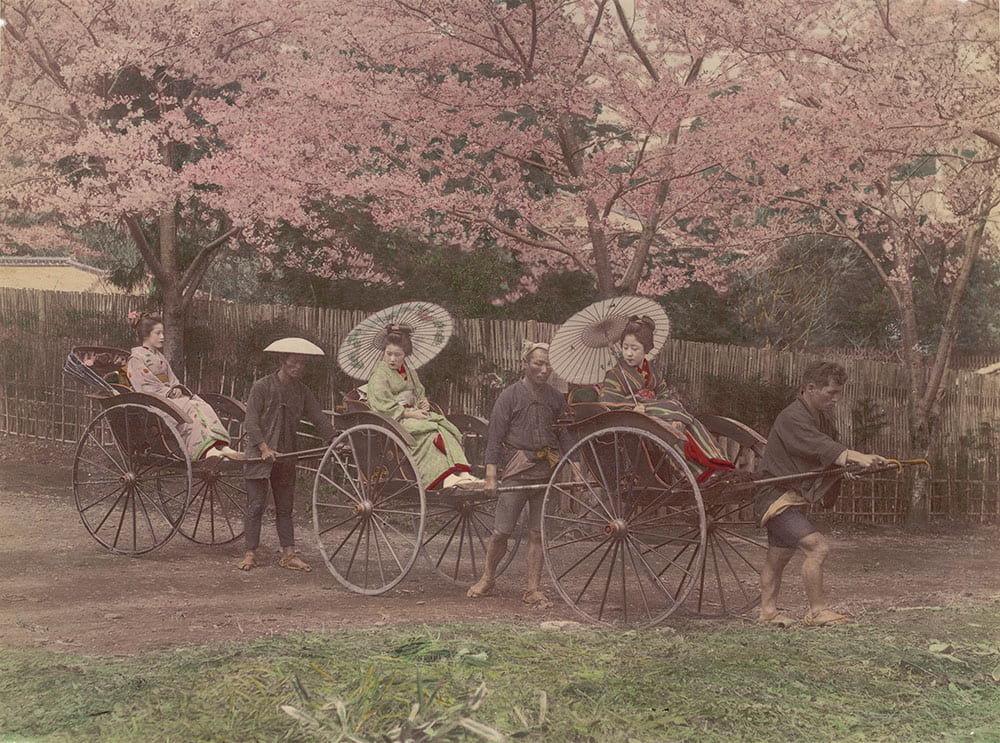
[Three jinrikisha drivers with women riding] Artist: Kusakabe Kimbei (Japanese, 1841-1934) Date: 1860-1900 Medium: Albumen print with applied color Dimensions: 8 x 10 in.
Collection of the Herbert F. Johnson Museum of Art, 84.120.055
Gift of Dr. and Mrs. Henry D. Rosin
Image courtesy of the Johnson Museum
We invite visitors to consider how fashion enables (and disables) the transit swarm of human bodies around, across, above and through physical space. The exhibition itself requires physical movement, from one space (the Human Ecology Building) to another (the Johnson Museum of Art); however, the pandemic challenges us to move in new ways and because campus is closed to the general public we invite you to move through our digital exhibition space and then consider how your own wardrobe changes depending on when, where, and how you wish to move.
Fashion in Transit began in digital form as a final project for the fall 2020 class, Curating Fashion Exhibitions, which was part of the “Fabrication” focal theme for the Society for the Humanities. The exhibition has been transformed and transported into two physical spaces and a newly curated website.
The multi-sited exhibition opens on March 30, 2020. We invite you to join us on Thursday, April 8, 1-2PM, for an eCornell keynote webinar (please register here).
Contact: fashioncollection@cornell.edu
Funding: Cornell Council for the Arts 2020-21 Biennial; Cornell Society for the Humanities (“Fabrication” focal theme); Cornell University College of Human Ecology and Department of Fiber Science and Apparel Design.
Special thanks to: American Red Cross, Anchorage Museum at Rasmuson Center Museum, Charles V. Beach, Steven Calco, College of Human Ecology at Cornell University, Cornell Council for the Arts, Cornell Department of Fiber Science and Apparel Design, Cornell Fashion + Textile Collection, the Cornell Program in Infrastructure Policy, the Cornell Society for the Humanities, Cornell Tech, Cornell University Library, Marcie Farwell, Professor Rick Geddes, Frederic Wright Gleach, Geospatial Information Collection, Harvard Biodesign Lab,Harvard SEAS, the Herbert F. Johnson Museum of Art, the Kheel Center for Labor-Management and Documentation Archives, Robert F. Kotaska, Manchester Art Gallery, Kathleen McDermott, Tom McDonald, Professor Anil Narayan Netravali, National Cowboy & Western Heritage Museum, Phil Penman, Denisse Pohls, David Rumsey Collection, Vanessa Sanchez, Amanda Shirnina, Smithsonian National Air and Space Museum, Chesley Taylor, the Wyss Institute, and the Yates County History Center for their generosity and support of both physical and digital exhibitions.

